
How to Turn Off Gas in an Emergency
Natural gas powers most of our homes in some way. Pumped from deep within the earth and transported across thousands of miles of pipes, natural gas is a true modern marvel.
As complex as the process of getting natural gas to your home is, it’s very safe and effective most of the time. However, if something does go wrong, you need to know what to do.
We’ll cover how to tell if you have a gas leak, as well as how to turn off the gas when necessary.
How to Check for Gas Leaks
Gas leaks can be caused by many things. Sometimes, natural disasters like hurricanes and earthquakes can damage your gas line and cause a leak. Other times there may be a problem with one of your gas appliances, like a faulty heat exchanger on a water heater or a pilot light going out in your furnace. It could even be as simple as forgetting to turn off the stove.
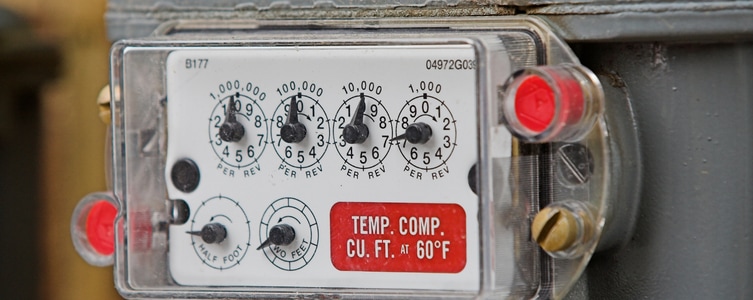
Whatever the case, natural gas is both toxic and flammable. Left unchecked, it can cause a fire. Keep an eye out for the following signs that you have a gas leak:
-
-
- Rotten egg smell. In its raw state, natural gas is odorless. Gas companies add a chemical to it called mercaptan that makes it stink like rotten eggs for easier detection. If you smell this in your home, you may have a leak.
- A hissing sound. If there’s a hissing sound in your home, it could be coming from a gas pipe and indicate a leak.
- Spinning Gas Dials. If the dials on your gas meter are spinning, then you may have a gas leak. This often happens after an earthquake damages the pipes and uncontrolled amounts of natural gas begin escaping.
- Gas Bubbles. A broken underground gas line can cause gas to escape, travel up the soil, and form bubbles in standing water outside your home.
- Physical Symptoms: A natural gas leak slowly depletes the oxygen in your home. As a result, you may experience headaches, nausea, fatigue, and/or many other symptoms.
- Rotten egg smell. In its raw state, natural gas is odorless. Gas companies add a chemical to it called mercaptan that makes it stink like rotten eggs for easier detection. If you smell this in your home, you may have a leak.
-

If you suspect a gas leak, leave your house and call the fire department and gas company to inspect it. For the safety of you and your family, that should always be the first course of action.
Now, there are emergency situations when you should know how to immediately shut off the gas to your home and/or appliances. For example, there have been cases when earthquakes damaged many gas lines at once and the gas company was overwhelmed. Under such circumstances, you should know how to turn off the gas yourself.
NOTE: Gas valves come in various shapes, sizes, and colors depending on their age and manufacturer. In this article, we provide general instructions on identifying gas valves found on different appliances. Your situation may be different, and you should always consult a professional if you are unsure where your appliance gas valves are located.
How to Turn Off a Gas Water Heater
To turn off the gas to your water heater, first locate the shutoff valve by tracing the gas pipe back from the water heater. The gas pipe will have a valve that looks like a knob and could have various colors or be uncoated. If the valve is parallel, or in line, with the gas pipe, that means the gas is on. Think of it as gas flowing in the direction of the valve. To shut off the gas to your water heater, turn the valve 90 degrees so it is perpendicular to the gas line. Think of it as blocking the flow of gas into the water heater.
NOTE: If you are having trouble finding your gas pipe or think you might be confusing it with a water pipe, contact a professional and then label the pipes. You could also turn a water fixture on and listen for the sound of moving water in the pipe. If there is no sound, it may be a gas pipe.

How to Turn Off a Gas Furnace
If there is a gas leak in your furnace, you can usually find a gas shutoff valve near the furnace body. Sometimes, it may be a little further away, but if you follow the pipe, it should lead into the furnace. The valve may be colored or uncoated. It will be pointed parallel to the gas pipe, indicating that the gas is on.
To shut the furnace gas valve off, turn it 90 degrees so that it is perpendicular to the gas pipe. Some people like to turn off their gas furnace for the summer in the hopes of saving energy and reducing heat, and you would do that the same way.
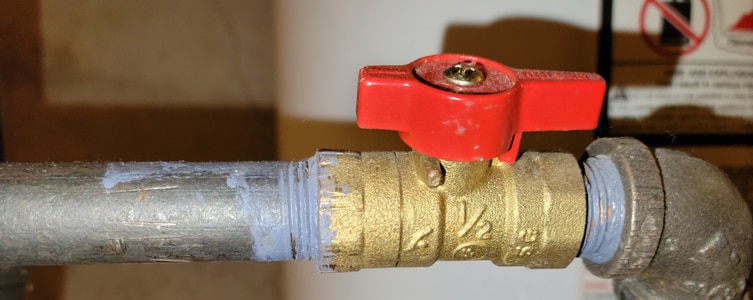
How to Disconnect a Gas Dryer
If you suspect a gas leak involving your clothes dryer, you will need to locate the gas valve feeding it. Many people have their dryer up against the wall, so you may need to move it slightly to access the gas shutoff valve. It will be a colored or uncoated knob on the gas line connected to the dryer.
Once you have located the gas dryer shutoff valve (and gotten past all the cobwebs), turn it 90 degrees so it is perpendicular to the gas pipe. Your clothes dryer will then be disconnected from the gas supply.
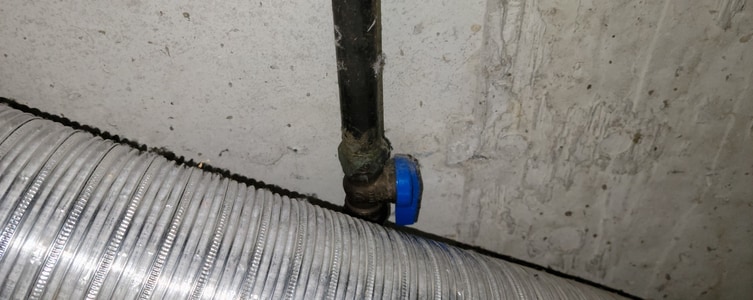
How to Turn Off Gas to a Stove
Gas stoves and ranges are some of the most common sources of gas leaks for the sheer fact that you can accidentally turn the range dial without igniting the flame, thereby allowing gas to slowly seep into your home. If this happens, you will smell the gas leak and should turn the dial off immediately, leave your home, and call the fire department.
If the gas leak is due to a deeper problem, you will need to cut the gas supply to the stove altogether. Since the gas connection is behind the range, you will almost certainly have to move it to locate the pipe and shutoff valve. Once you locate the valve, give it a quarter turn to the right so it is perpendicular to the gas pipe, and the gas will be off.
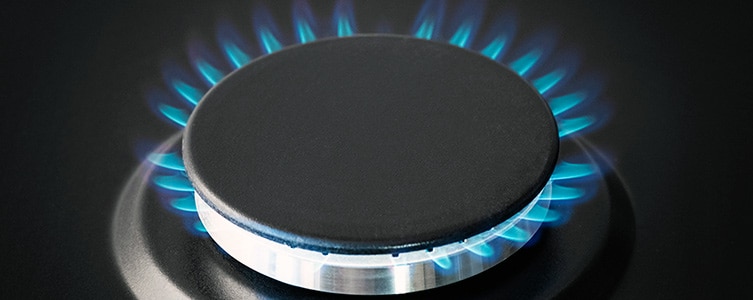
How to Turn Off a Gas Fireplace
For a gas fireplace with a pilot light, you need to find the location of the gas valve. It will almost always be located below the fireplace behind a removable cover or louver.
If there is no louver, then you will need to remove the entire front cover. Since it may be heavy and awkward to move, we recommend having someone help you. After removing the cover, you should notice a valve (often it's red) running parallel to the pipe it's on. That's the gas valve. Turn the fireplace gas valve perpendicular to the pipe to shut off the gas and replace the cover.
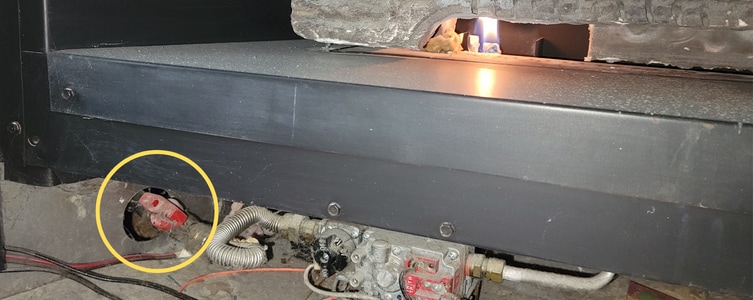
How to Turn Off Gas to Your Whole House
If you know you have a gas leak but can’t pinpoint where it’s coming from specifically, your safest bet (besides calling your gas company) is to turn off the gas supply to your entire house.
To turn off gas to your whole house, you will need to locate your gas meter, which is the point at which gas enters your home from the outside.
Typically, your gas meter will be located on the side of your house and will have a pipe coming up from the ground, running through gas dials, and entering your home.
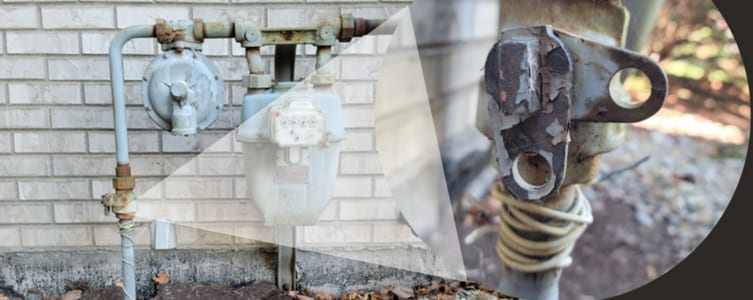
Once you locate your gas meter, you will need to find the natural gas shutoff valve, which is often the first fitting out of the ground. There will be a hole in the middle of it (which the gas company uses to lock your meter if you don’t pay your bill). However, on some newer models, the shutoff valve can be past the meter. It will be pointed parallel, or down the length of the gas pipe, meaning that gas is flowing freely.
To shut the valve, use a wrench to turn it perpendicular to the gas pipe, or a quarter turn. Once you do so, the gas supply will be cut to your entire home.
NOTE: You may find that some gas appliances still work for a brief period after you have turned off the gas. That’s simply because they are using leftover gas in the lines. Once this is depleted, they won’t work anymore.
Should I Turn the Gas Back on Myself?
While it’s acceptable to turn the gas off during an emergency, you should never attempt to turn the gas back on by yourself. Always call the gas company to turn the gas back on to both your main valve and appliances. If they can’t come out right away, wait.
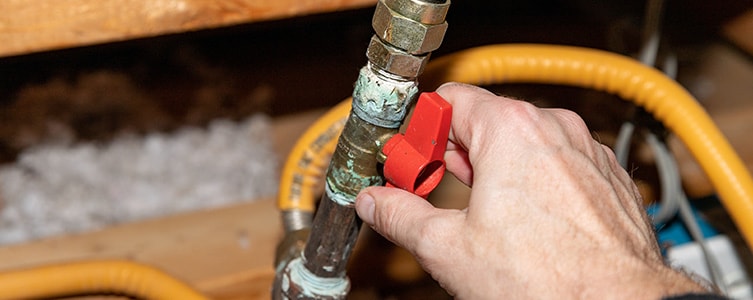
Many things can go wrong if you turn the gas on yourself. For example, if you turn the valve too quickly, the sudden increase in gas pressure could damage the pressure regulator. Also, there are specific steps to follow when turning appliances with pilot lights back on. If the pilot lights are not properly lit, gas could seep into your home. Not to mention, if you accidentally damage the gas meter (which belongs to the gas company), you could be liable for covering the repairs.
Your gas company will know how to properly address these and other issues, so leave turning on the gas to them.
Natural Gas versus Carbon Monoxide
Many people confuse natural gas with carbon monoxide. They are not the same thing. Carbon Monoxide (CO) is an invisible, odorless gas that results from improperly burned or exhausted fuel inside gas appliances. It's even more dangerous than natural gas because there is no additive that gives it a scent.
The only way to detect CO is with a CO detector. Every home should have a CO detector on every floor, including in the basement, to give you early warning of a leak. If you have a CO leak, exit the home immediately and call your fire department.
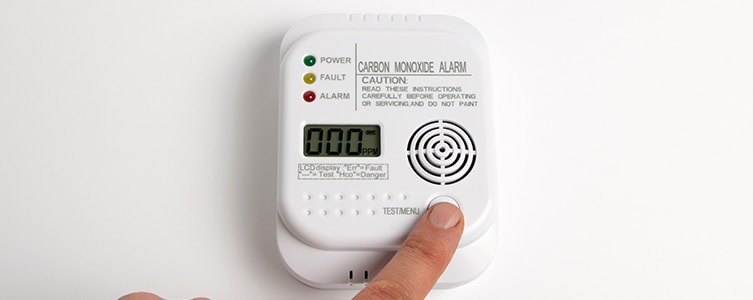
Stay Safe
Natural gas should never be trifled with. If you are not comfortable turning it off, just wait for your gas company to come out. Again, calling your gas company should always be your first step anyway.
If you do decide to turn the gas off yourself, exit the home once it is off. The gas company should still do a full checkup for your protection. When all is clear, they will turn the gas back on properly. If you follow these safe practices, things will go back to normal before you know it.

